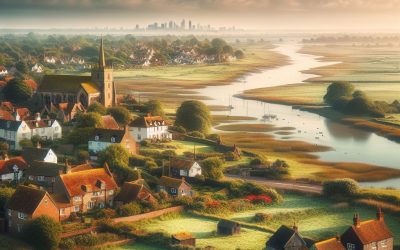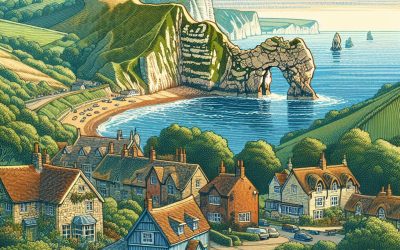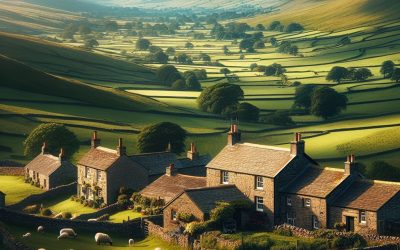World Geography
Geography is the study of the Earth’s landscapes, environments, and the relationships between people and their surroundings. It encompasses both the physical aspects of the Earth, such as its landforms, bodies of water, and climate, as well as the human aspects, including population distribution, cultures, and economies. World geography is a broad field that seeks to understand the complexities of our planet and how humans interact with it. By studying world geography, we can gain a deeper appreciation for the diversity of our planet and the interconnectedness of its various regions.
Geography is a multidisciplinary field that draws on elements of physical science, social science, and humanities. It involves the use of maps, spatial analysis, and geographic information systems (GIS) to understand the Earth’s surface and the processes that shape it. World geography also encompasses the study of human geography, which examines the ways in which people and their activities are distributed across the Earth. By understanding world geography, we can better appreciate the environmental, cultural, and economic challenges facing different regions of the world. This knowledge is crucial for addressing global issues such as climate change, resource management, and international development.
The Five Oceans and Seven Continents
The Earth’s surface is divided into five major oceans: the Pacific, Atlantic, Indian, Southern (or Antarctic), and Arctic Oceans. These vast bodies of water play a crucial role in regulating the Earth’s climate and supporting diverse marine ecosystems. The oceans also serve as important transportation routes and a source of food and other natural resources for human societies around the world.
In addition to the oceans, the Earth’s landmasses are divided into seven continents: Africa, Antarctica, Asia, Europe, North America, Australia (or Oceania), and South America. Each continent has its own unique physical and cultural characteristics, shaped by millions of years of geological processes and human history. From the deserts of Africa to the rainforests of South America, the continents offer a rich tapestry of landscapes and environments for exploration and study.
Major Mountain Ranges and Deserts
The Earth’s surface is also marked by major mountain ranges and deserts that have shaped the planet’s physical and cultural landscapes. The Himalayas, for example, are the highest mountain range in the world and are home to diverse ecosystems and cultures in countries such as India, Nepal, and Bhutan. The Andes in South America, the Rockies in North America, and the Alps in Europe are other prominent mountain ranges that have influenced human settlement patterns and economic activities.
Deserts cover about one-third of the Earth’s land surface and are characterized by low precipitation and extreme temperatures. The Sahara Desert in Africa is the largest hot desert in the world, while the Gobi Desert in Asia is one of the largest cold deserts. Deserts are not only home to unique flora and fauna but have also been important trade routes and cultural crossroads throughout history.
Climate Zones and Biomes
The Earth’s climate is influenced by a variety of factors, including latitude, altitude, ocean currents, and prevailing winds. As a result, the planet is divided into different climate zones, each with its own characteristic weather patterns and ecosystems. The equator, for example, experiences a tropical climate with high temperatures and heavy rainfall, while the polar regions have a cold and dry climate.
These climate zones give rise to different biomes, or large ecological areas characterized by distinct plant and animal communities. The tropical rainforest biome, found near the equator, is home to a diverse array of species and is vital for regulating the Earth’s climate. The grasslands biome, found in regions such as the African savannah and North American prairies, supports grazing animals and has been important for human agriculture throughout history.
Human Geography and Population Distribution
Human geography examines the ways in which people and their activities are distributed across the Earth’s surface. It encompasses topics such as population growth, migration patterns, urbanization, and cultural diversity. Understanding human geography is crucial for addressing global challenges such as poverty, inequality, and environmental degradation.
Population distribution is uneven across the world, with some regions experiencing rapid population growth while others are declining. The majority of the world’s population lives in Asia, particularly in countries such as China and India. Urban areas are also growing rapidly, with more than half of the world’s population now living in cities. This trend has significant implications for infrastructure development, resource management, and social inequality.
Historical and Cultural Geography
Historical geography examines how human activities have shaped the Earth’s landscapes over time. It explores topics such as colonialism, trade routes, and the rise and fall of empires. Cultural geography focuses on how human cultures have developed in different regions of the world and how they interact with their environments.
The Silk Road, for example, was an ancient trade route that connected China with Europe and facilitated the exchange of goods, ideas, and technologies across Eurasia. This historical trade route had a profound impact on the development of cultures and economies along its path. Similarly, cultural geographers study how different societies have adapted to their environments through practices such as agriculture, architecture, and religious beliefs.
The Importance of Geographic Knowledge
Geographic knowledge is crucial for addressing global challenges such as climate change, resource management, and international development. By understanding world geography, we can better appreciate the environmental, cultural, and economic challenges facing different regions of the world. This knowledge is crucial for addressing global issues such as climate change, resource management, and international development.
Geographic knowledge also helps us to understand our interconnectedness with other regions of the world. By studying world geography, we can gain a deeper appreciation for the diversity of our planet and the interconnectedness of its various regions. This understanding can foster a sense of global citizenship and empathy for people from different cultures and backgrounds.
In conclusion, world geography is a complex and multifaceted field that encompasses both physical and human aspects of the Earth’s landscapes. By studying world geography, we can gain a deeper appreciation for the diversity of our planet and the interconnectedness of its various regions. This knowledge is crucial for addressing global challenges such as climate change, resource management, and international development. It also helps us to understand our interconnectedness with other regions of the world and fosters a sense of global citizenship.
FAQs
What is world geography?
World geography is the study of the Earth’s landscapes, environments, and the relationships between people and their environments. It encompasses the physical features of the Earth, as well as the human activity that takes place on it.
Why is world geography important?
World geography is important because it helps us understand the world around us. It provides insights into the physical and human processes that shape our planet, and helps us make informed decisions about how to interact with our environment.
What are the main branches of world geography?
The main branches of world geography include physical geography, which focuses on the Earth’s natural features and processes, and human geography, which examines the relationships between people and their environments.
How does world geography impact our daily lives?
World geography impacts our daily lives in numerous ways, from influencing the weather and climate we experience, to shaping the availability of natural resources and influencing the distribution of populations and cultures around the world.
What are some key concepts in world geography?
Key concepts in world geography include location, place, human-environment interaction, movement, and region. These concepts help geographers understand and interpret the world around them.
Essex, England
Welcome to Essex, England: Explore the County That Became a Cultural and Coastal Gem Essex is more than just a county in the East of England — it’s a vibrant blend of historic charm, bustling seaside resorts, and dynamic towns and villages. This article will take you through the fascinating world of Essex, from its rich Anglo-Saxon roots to its modern-day appeal, including the essential role of Essex County Council. If you’ve ever wondered why Essex holds such a prominent place in British culture, or why so many people from Essex are proud of their roots, you’re in the right place. Whether you’re planning to visit, move, or simply learn more, there’s plenty to discover about this iconic part of the UK. Essex is a county located in the southeast of England, bordering the counties of Suffolk and Cambridgeshire to the north, Hertfordshire to the west, Kent across the River Thames to the south, and London to the southwest. With its close proximity to London, Essex has become an important commuter belt, attracting many residents who work in the capital but prefer to live in a more rural or suburban setting. Outline What Makes Essex Special Today? How Did the County of Essex Develop Over Time? Where Are the Best Seaside Resorts Along the Essex Coastline? Which Towns and Villages in Essex Should You Visit? How Has Essex County Council Shaped Modern Services in Essex? Why is Chelmsford Called the County Town of Essex? What’s Unique About the Essex Coastline and the Thames Estuary? How Do New Towns Like Basildon and Harlow Represent Essex’s Growth? What is the...
East Yorkshire, England
East Yorkshire, located in the north of England, is a hidden gem waiting to be discovered. With its rich history, stunning natural beauty, delicious local cuisine, vibrant cultural scene, and a wide range of outdoor activities and family-friendly attractions, East Yorkshire has something for everyone. In this blog post, we will take you on a journey through this beautiful region and provide you with all the information you need to plan your visit. Summary East Yorkshire is a hidden gem in the north of England, offering rich history, natural beauty, and cultural highlights. From Roman times to modern day, East Yorkshire has a fascinating history waiting to be discovered. The coast and countryside of East Yorkshire offer stunning natural beauty, perfect for outdoor activities like walking, cycling, and watersports. Food lovers will enjoy the local delicacies and must-try restaurants in East Yorkshire. East Yorkshire has a vibrant cultural scene, with museums, galleries, and festivals to explore. Discovering the Rich History of East Yorkshire: From Roman Times to Modern Day East Yorkshire has a fascinating history that dates back to Roman times. The region was once home to a Roman settlement called Petuaria, which was an important trading hub. Today, visitors can explore the remains of this ancient settlement at the Brough Roman Fort. Another key historical site in East Yorkshire is Beverley Minster, a stunning Gothic cathedral that dates back to the 13th century. This magnificent building is known for its intricate carvings and beautiful stained glass windows. To learn more about the history of East Yorkshire, visitors can also visit the Hull and East Riding Museum. This...
East Sussex, England
East Sussex is a county located on the southeastern coast of England. It is known for its stunning natural beauty, rich history, and vibrant cultural scene. With its picturesque landscapes, historic towns and villages, and a wide range of activities and attractions, East Sussex offers something for everyone. East Sussex has played a significant role in English history. It was the site of the Battle of Hastings in 1066, which marked the beginning of Norman rule in England. The county is also home to several historic castles and landmarks that showcase its medieval past. Additionally, East Sussex has been a hub for artistic and cultural movements throughout history, with many renowned artists and writers finding inspiration in its landscapes. Summary East Sussex is a coastal county with a rich history and culture. The natural beauty of East Sussex includes the South Downs and beaches. Historic towns and villages like Hastings and Rye are waiting to be discovered. East Sussex has a thriving art and cultural scene with museums, galleries, and festivals. Local specialties and dining experiences make East Sussex a foodie’s paradise. Exploring the Natural Beauty of East Sussex: From the South Downs to the Beaches One of the highlights of East Sussex is the South Downs National Park, which covers a large portion of the county. The park offers breathtaking views of rolling hills, picturesque villages, and ancient woodlands. It is a paradise for hikers and nature lovers, with numerous trails and paths to explore. Another natural wonder in East Sussex is the Seven Sisters Cliffs. These iconic chalk cliffs stretch along the coastline and provide stunning...
East Riding, England
East Riding, located in the northeastern part of England, is a region steeped in history and natural beauty. It is one of the three historic subdivisions of the county of Yorkshire, along with North Riding and West Riding. The region has a rich and diverse history, with evidence of human habitation dating back to the Mesolithic period. Throughout the centuries, East Riding has been influenced by various cultures and civilizations, including the Romans, Vikings, and Normans. The geography of East Riding is characterized by its diverse landscapes, ranging from the stunning coastline along the North Sea to the rolling countryside and picturesque villages. The region is home to several market towns, including Beverley, Driffield, and Bridlington, which offer a glimpse into the area’s past with their historic buildings and charming streets. The population of East Riding is approximately 600,000 people, making it a vibrant and thriving community. Summary East Riding has a rich historical background that dates back to the Roman era. The natural beauty of East Riding is breathtaking, with stunning coastlines and rolling hills. East Riding is home to numerous museums and galleries that showcase the region’s cultural heritage. The local cuisine in East Riding is diverse and delicious, with a focus on fresh seafood and locally sourced produce. East Riding boasts several castles and stately homes that offer a glimpse into the region’s past. Exploring the Natural Beauty of East Riding One of the main attractions of East Riding is its natural beauty. The region boasts a stunning coastline that stretches for miles, with sandy beaches, rugged cliffs, and charming seaside towns. Popular destinations...
Durham, England
Durham is a historic city located in the North East of England. Situated on the banks of the River Wear, Durham is known for its rich history, stunning architecture, and vibrant cultural scene. The city is home to Durham Cathedral, a UNESCO World Heritage Site, and Durham Castle, which is now part of Durham University. With its picturesque riverbanks, charming streets, and friendly community, Durham has become a popular tourist destination. Durham’s location in the North East of England makes it easily accessible from major cities such as Newcastle and York. The city’s significance dates back to Anglo-Saxon times when it was a strategic location for defending against Viking invasions. Over the centuries, Durham grew in importance as a center of religious and political power. Today, visitors come to Durham to explore its fascinating history, admire its architectural wonders, and experience its unique charm. Summary Durham is a historic city located in North East England. The city has a rich history dating back to Anglo-Saxon times and is home to many iconic landmarks, including Durham Cathedral and Durham Castle. Durham Cathedral is a UNESCO World Heritage Site and is considered one of the finest examples of English architecture. Durham Castle was originally a Norman fortress but has since been converted into a prestigious university. Visitors can also enjoy exploring Durham’s picturesque riverbanks and bridges, as well as its hidden gems such as museums, galleries, and theatres. The History of Durham: From Anglo-Saxon Times to the Present Day Durham has a long and storied history that spans over a thousand years. The city was founded in the 10th century...
Dorset, England
Dorset, located in the southwest of England, is a county known for its natural beauty and rich history. With a population of around 770,000, Dorset is home to stunning landscapes, charming villages, and historic landmarks. The county has a long and fascinating history, with evidence of human habitation dating back thousands of years. Dorset is blessed with an abundance of natural beauty, from its rolling hills and picturesque countryside to its stunning coastline. The county is perhaps best known for its Jurassic Coastline, which stretches for 95 miles and is a designated UNESCO World Heritage Site. This stretch of coastline is renowned for its geological importance, as it showcases 185 million years of Earth’s history. Visitors can explore iconic landmarks such as Durdle Door and Lulworth Cove, which offer breathtaking views and opportunities for outdoor activities. Summary Dorset is a county of natural beauty and rich history, with plenty of attractions to explore. The Jurassic Coastline is a must-visit World Heritage Site, offering stunning views and fascinating geological features. Dorset’s rural villages and towns are full of charm and character, with plenty of hidden gems to discover. The county’s museums and galleries offer a rich cultural heritage, showcasing everything from local art to ancient artefacts. Dorset’s famous festivals and events celebrate the region’s unique culture and traditions, with something for everyone to enjoy. Exploring the Jurassic Coastline: Dorset’s World Heritage Site The Jurassic Coastline is a must-visit destination for nature lovers and history enthusiasts alike. This World Heritage Site is not only visually stunning but also holds significant scientific value. It is one of the most important places...
Devon, England
Located in the southwest of England, Devon is a county known for its stunning natural beauty and rich history. With its diverse landscape, from the rolling hills of Dartmoor to the dramatic cliffs of the Jurassic Coast, Devon offers visitors a wide range of outdoor activities and breathtaking scenery. In addition to its natural attractions, Devon is also home to a wealth of historical landmarks and architectural treasures. In this post, we will explore the geography, history, architecture, cuisine, festivals, beaches, outdoor activities, wildlife, and towns and cities of Devon. By the end of this article, readers will have a comprehensive understanding of what makes Devon such a special place to visit. Summary Devon is a land of natural beauty and rich history, making it a popular destination for tourists. From the Exmoor National Park to the Jurassic Coast, Devon’s geography offers a diverse range of landscapes to explore. Devon’s history spans from prehistoric times to the present day, with many historical sites and landmarks to discover. Devon’s architecture is a blend of medieval, Georgian, and Victorian styles, adding to the charm of the region. Devon’s cuisine is a highlight, with cream teas and seafood delights being popular dishes to try. Devon’s Geography: From the Exmoor National Park to the Jurassic Coast Devon’s geography is incredibly diverse, offering visitors a wide range of landscapes to explore. The county is home to two national parks: Dartmoor and Exmoor. Dartmoor National Park is known for its rugged granite tors, vast open moorland, and ancient woodlands. It is a paradise for hikers and nature lovers, with numerous walking trails and opportunities...
Derbyshire, England
Derbyshire is a county located in the East Midlands region of England. It is bordered by several other counties, including Nottinghamshire, South Yorkshire, and Staffordshire. The county has a rich history that dates back to Roman times, and it has played an important role in the development of the UK. Derbyshire is known for its diverse geography, which includes rolling hills, limestone valleys, and the famous Peak District National Park. The county is also home to several rivers, including the River Derwent and the River Trent. The landscape of Derbyshire has been shaped by centuries of human activity, from mining and agriculture to the Industrial Revolution. Summary Derbyshire is a county in the East Midlands region of England with a rich history and diverse geography. The Peak District National Park is a must-visit destination in Derbyshire, offering stunning natural beauty and outdoor activities. Derbyshire has a rich cultural heritage, with historic sites such as Chatsworth House and Haddon Hall. The county played a significant role in the Industrial Revolution, with innovations in textiles, mining, and engineering. Famous landmarks and attractions in Derbyshire include the historic spa town of Buxton and the impressive Derwent Dam. Derbyshire’s traditional cuisine is a gastronomic delight, with dishes such as Bakewell pudding and Derbyshire oatcakes. Sports and leisure activities in Derbyshire range from football and cricket to hiking and cycling. Festivals and events in Derbyshire celebrate local culture, such as the Bakewell Show and the Matlock Bath Illuminations. Accommodation options in Derbyshire range from cozy B&Bs to luxury hotels, with something to suit every budget and preference. When planning your visit to Derbyshire, be...
Cumbria, England
Cumbria, located in the northwest of England, is a county known for its stunning natural beauty and rich history. It is bordered by Scotland to the north, Northumberland to the east, County Durham and North Yorkshire to the southeast, Lancashire to the south, and the Irish Sea to the west. Cumbria has a long and fascinating history, with evidence of human habitation dating back to the Stone Age. The county is also home to the Lake District National Park, which is renowned for its breathtaking landscapes and outdoor activities. Cumbria’s natural beauty is one of its biggest draws for visitors. The county is home to the Lake District National Park, which covers an area of over 2,300 square kilometers and is considered one of the most beautiful places in the UK. The park is characterized by its stunning lakes, rugged mountains, and picturesque villages. It offers a wide range of outdoor activities, including hiking, cycling, boating, and wildlife watching. In addition to its natural beauty, Cumbria also has a rich history that can be explored through its many historic sites and landmarks. The county has a long and fascinating history that dates back thousands of years. It was once part of the ancient kingdom of Rheged and later became an important center for Roman occupation. Cumbria is also home to several historic castles and stately homes, including Carlisle Castle and Muncaster Castle. Summary Cumbria is a county with natural beauty and rich history. The Lake District National Park is the crown jewel of Cumbria and worth exploring. Cumbria’s coastal towns and villages are worth discovering. Cumbria has a rich...
Cornwall, England
Cornwall, located in the southwestern part of England, is a region known for its stunning coastline, rich history, and vibrant culture. This blog post will provide a comprehensive guide to Cornwall, covering its history from ancient times to the present day, the best beaches and walks along its coastline, its culinary heritage including the famous Cornish pasty, its mining industry and popular mining sites to visit, its artistic and cultural scene with museums, galleries, and festivals, its beautiful gardens, the legends of King Arthur associated with the region, its diverse wildlife, the best places to stay in Cornwall, and the top attractions that should not be missed. Whether you are a history buff, a nature lover, or simply seeking a relaxing beach holiday, Cornwall has something to offer for everyone. Summary Cornwall has a rich history dating back to ancient times, with evidence of human settlement from the Neolithic period. The coastline of Cornwall is home to some of the most stunning beaches and walks in the UK, including the famous South West Coast Path. The Cornish pasty is a delicious culinary heritage of Cornwall, with a history dating back to the 13th century. Cornwall’s mining heritage is a fascinating part of its history, with tin and copper mining playing a significant role in the region’s economy for centuries. Cornwall has a thriving artistic and cultural scene, with museums, galleries, and festivals showcasing the region’s unique heritage and contemporary creativity. The History of Cornwall: From Ancient Times to the Present Day Cornwall has a rich and fascinating history that dates back thousands of years. In prehistoric times, Cornwall...
Discovering the Hidden Gems of Zhytomyr: A British Traveller’s Guide
Zhytomyr, a lesser-known destination in Ukraine, is a hidden gem that British travellers should consider visiting. Located in the western part of the country, Zhytomyr offers a unique blend of rich history, stunning architecture, delicious cuisine, and warm hospitality. While it may not be as well-known as other Ukrainian cities like Kyiv or Lviv, Zhytomyr has plenty to offer for those seeking an off-the-beaten-path experience. Summary Zhytomyr is a hidden gem for British travellers looking for an off-the-beaten-path destination. The city has a rich history dating back to the 10th century, with many historical sites to explore. The picturesque old town is a must-see, with stunning architecture ranging from Baroque to Art Nouveau. Foodies will love sampling the local cuisine, including traditional dishes and hidden foodie spots. Visitors can experience Ukrainian hospitality and culture by meeting the friendly locals. Uncovering the Rich History of Zhytomyr: From the 10th Century to Today Zhytomyr has a fascinating history that dates back to the 10th century. It was founded by Prince Zhytomyr in the early medieval period and quickly became an important center of trade and culture. Throughout its history, Zhytomyr has witnessed numerous key events, including battles, invasions, and political changes. To delve into the city’s history, visitors can explore its historical landmarks and museums. One of the must-see attractions is the Old Water Tower, which dates back to the 19th century and offers panoramic views of the city. The Zhytomyr Historical Museum is another must-visit destination, showcasing artifacts and exhibits that tell the story of the city’s past. Exploring the Picturesque Old Town: Must-See Sights and Attractions The Old Town...
Cheshire, England
Cheshire is a county located in the North West of England. It is bordered by Merseyside and Greater Manchester to the north, Derbyshire to the east, Staffordshire and Shropshire to the south, and Wales to the west. With a population of over one million people, Cheshire is a vibrant and diverse county with a rich history and culture. Cheshire has a long and fascinating history that dates back to Roman times. The county was once part of the Roman province of Britannia, and evidence of their occupation can still be seen today in the form of Roman forts and settlements. During medieval times, Cheshire was an important agricultural region, known for its fertile soil and thriving farming industry. The county also played a significant role in the Industrial Revolution, with its textile mills and salt mines contributing to the growth of the British economy. Today, Cheshire is a popular tourist destination, attracting visitors from all over the world. The county is known for its stunning countryside, historic landmarks, and vibrant cultural scene. Whether you’re interested in exploring ancient castles, hiking through picturesque landscapes, or indulging in some retail therapy, Cheshire has something to offer everyone. Summary Cheshire is a county located in North West England, known for its beautiful countryside and rich history. From Roman times to present day, Cheshire has played an important role in shaping the history of England. Cheshire offers a wide range of tourist attractions, from historic castles to modern museums and art galleries. Nature lovers will find plenty to explore in Cheshire’s countryside, with its rolling hills, forests and rivers. Cheshire’s industrial heritage is...











